The second blog in our Fentanyl Uncovered series explores the impact fentanyl has had on the opioid epidemic.
In Part 1 of this series, we discussed the beginnings of the opioid epidemic, and the origin of fentanyl. In Part 2 we’ll discuss how the modern opioid epidemic was triggered largely by the over-prescribing of painkillers like oxycodone.
Under the brand name OxyContin, released by Purdue Pharma in 1995, oxycodone was marketed to prescribers as a valuable medical breakthrough in pain management. The painkiller provided lasting relief to patients suffering from moderate to severe pain.
Despite assurances that the drug was safe and effective, initial versions held potential for abuse as it could be smoked, snorted, or even injected. It was sold in doses ranging from 5 to 160 milligrams, and as time passed, more and more patients became dependent on it.
Purdue’s aggressive marketing as well as a general lack of understanding about the dangers of the drug led to rampant over-prescribing. In the early 2000’s, illegitimate pain clinics, or “pill mills” began popping up across the United States to feed the nation’s growing opioid dependency issue. This problem was especially bad in states like Florida, which, up until 2009, had no way of electronically tracking the number of prescriptions being dispensed. The state was therefore unable to crack down on doctors who were abusing their privileges or patients who were “doctor shopping” — a term describing the disingenuous act of seeing multiple doctors in each prescribing cycle to increase their allotment of narcotics.
How “Safe” Substances Led to Widespread Abuse
As illicit use of opioids skyrocketed, prescriptions dispensed in states like Florida were commonly trafficked across state lines to be sold on the street elsewhere. Selling prescription opioids became a lucrative enterprise with high levels of demand as some brazen dealers even resorted to selling pills on websites like Craigslist. The dispensing of opioids peaked in 2012 with over 255 million prescriptions filled, a dispensing rate of 81.3 prescriptions per 100 people.
Soon, the devastating consequences of the opioid epidemic were front page news. The number of deadly overdoses more than tripled between 1999 and 2015 as the nation began to grow desperate for policy that would crack down on the crisis.
A series of legislative measures were taken to reduce prescription misuse, and in the years that followed the number of opioid prescriptions dispensed in America began to taper off. Unfortunately, though, overdose rates continued to rise. While the over-prescribing of opioids had been addressed — at least somewhat — treating the nation’s dependency on the drugs had not.
Compounding Factors in the Opioid Crisis
Over time, more and more people with opioid use disorders turned to the street to acquire their substances. Demand for illicit opioids was at an all-time high, but supply was continuing to drop, especially with the increasing media attention brought on by Purdue’s growing list of lawsuits. Meanwhile, the void left by the decreasing supply of prescription opioids began to be filled by fentanyl. As we discussed in the first blog in our fentanyl series, fentanyl had appeal to drug dealers because it was cheaper to make and easier to traffic than heroin. Its extreme level of potency, though, also made it far more dangerous than other opioids.
Concurrently, another event would come to impact the opioid epidemic. When the COVID-19 pandemic struck, many people were left feeling isolated. Loss of employment, interrupted school schedules, and a lack of social interaction — as well as a range of other factors — all contributed to the ever-rising opioid overdose rates. The despair that many people felt caused existing opioid use disorders to worsen and interrupted the recovery process for others. From April of 2020 to April of 2021, the CDC recorded a 28.5% increase in overdose deaths involving synthetic opioids, with fentanyl serving as the primary cause.
Because fentanyl is often used to cut other drugs or pressed into counterfeit pills, many people have ingested it unknowingly. Its persistent use across the United States poses a significant threat not only to those with opioid use disorders, but also those experimenting with narcotics and users of drugs like heroin, cocaine, and amphetamines. Currently, fentanyl is estimated to account for roughly 75% of deadly drug overdoses in the United States.
Pushing for Progress in the Fight Against Fentanyl
To address fentanyl’s devastation, many innovative new approaches are being leveraged. Access to medication for opioid use disorder (MOUD) has been expanded and community outreach efforts are growing as well. Additionally, activists and legislators continue to advocate for wider distribution of Narcan, a medication used to reverse the effects of overdoses, and facilities have begun giving active users fentanyl test strips to help curtail accidental ingestion of the drug. These efforts certainly account for progress, but more still needs to be done to halt the opioid’s rising death toll.
The illicit synthesis of fentanyl continues to plague the country, but it’s important to acknowledge that recovery is possible even for the most heavily dependent fentanyl users. Withdrawal from fentanyl can be uncomfortable, but not insurmountable, especially when one’s addiction treatment involves a multi-faceted approach, including detox, medication regiments, therapy, group meetings, and other treatment resources. With the increasing prevalence of this dangerous drug, there has never been a more critical time for those with opioid use disorders to seek treatment.
Part 3:The Future of Opioids and Recovery
If you or a loved one are struggling with addiction, call the New England Recovery Center today at 1-877-MyRehab.










